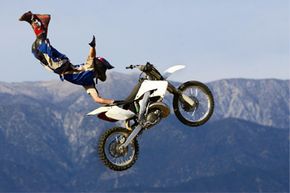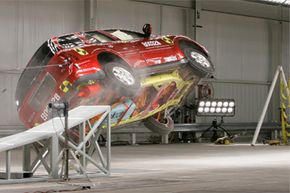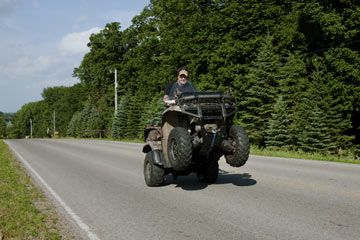Some people associate off-roading -- whether on ATVs, SUVs or dirt bikes -- with oppressive engine noise and possible environmental degradation; for others, it's a favored way to explore the outdoors. But off-roading can be dangerous, although it depends on various factors, including the environment, the equipment being used and the way you drive.
For example, the sport of motocross, while more popular than ever, is notoriously dangerous for both amateur and professional riders. The sport uses off-road motorcycles on dirt tracks, ramps and other equipment designed to produce spectacular leaps and stunts. It's also synonymous with death-defying crashes and broken bones because riders often try to pull off flips, long-distance jumps and other risky maneuvers -- and they don't always succeed.
Advertisement
The pros aren't the only ones injuring themselves. From 2001 through 2004, an average of 23,800 people suffered motocross-related injuries each year -- and that's for people 19 years old and younger [source: CDC]. Superstar rider Travis Pastrana has become equally well known for his spectacular riding as for the litany of serious injuries he's sustained, including a dislocated spinal column (which is often fatal), concussions and dozens of broken bones.
You don't have to be a daredevil to put yourself in harm's way while off-roading, whether on a dirt bike or otherwise. Wearing a helmet or just a seatbelt if you're in an off-roading SUV can lead to a false sense of security.
One of the biggest problems may be that both development and the effort to crack down on unauthorized off-roading has pushed some riders to seek out more remote, and likely more dangerous, areas. Consequently, there's rising concern about riders, especially those on dirt bikes or ATVs, fleeing police officers who would ticket them for riding in prohibited areas [source: Russell].
Law enforcement officials point to another misperception: the marketing of off-road motorcycles and ATVs as toys, suitable for children or those without proper training [source: Russell]. Some are designed specifically for children, but even these vehicles can go up to 30 miles per hour (48 kilometers per hour) and weigh up to 300 pounds (136 kilograms) [source: Russell].
A 1987 study by Canadian researchers found that around half of victims of off-road accidents were younger than 16 years old [source: Hasselback and Wilding]. Today, under-16 ATV riders make up about 27 percent of all injuries and 20 percent of all deaths [source: ATVSafety.gov].
So off-roading can be quite dangerous. But it's also a potentially fun and safe activity enjoyed by millions. On the next page, let's look at how to stay safe while off-roading.
Advertisement



